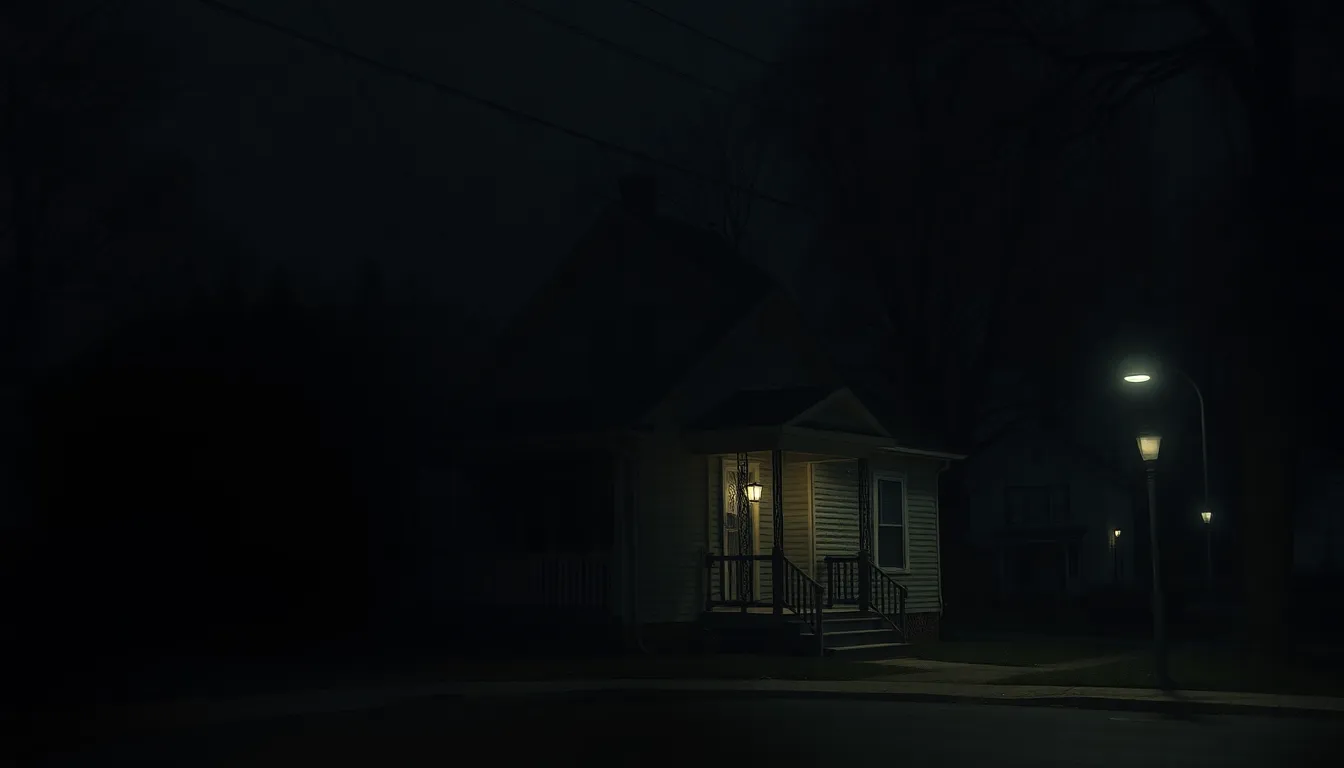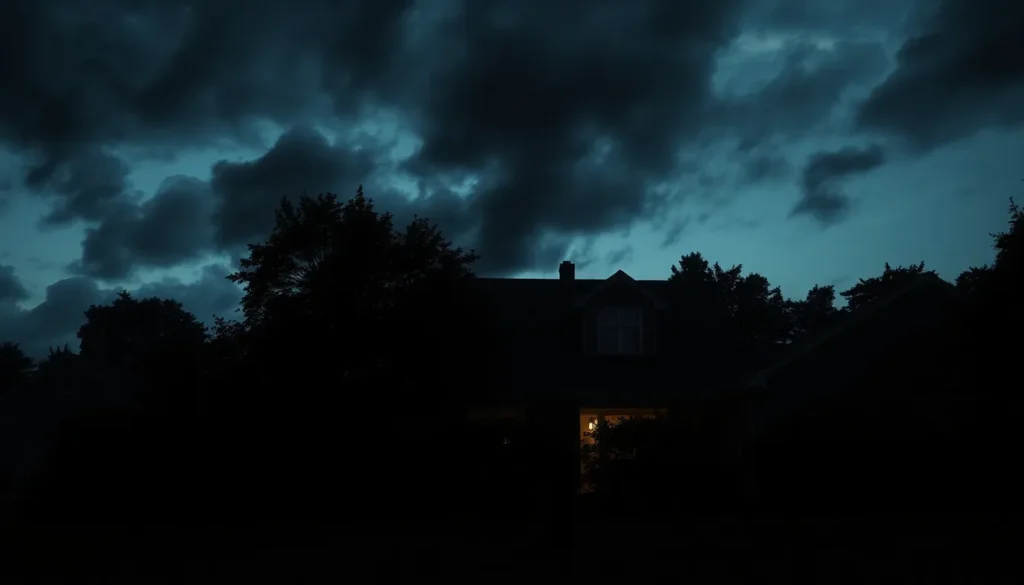Table of Contents
ToggleIn the realm of television thrillers, The Watcher has captured audiences with its chilling narrative and suspenseful twists. Many viewers are left wondering what inspired this gripping series and where its storylines originate. The show delves into themes of obsession, mystery, and the impact of an unseen presence, making it a compelling watch for fans of the genre.
Drawing from real-life events, The Watcher is based on a true story that has intrigued and horrified many. The tale revolves around a family receiving ominous letters from a mysterious figure, raising questions about safety and the unknown. As the series unfolds, it intertwines fact and fiction, creating a captivating exploration of fear and paranoia that resonates deeply with its audience.
Overview of “The Watcher”
“The Watcher” unfolds a suspenseful narrative rooted in true events, captivating audiences with its chilling plot and unexpected twists. The series centers on a family’s disturbing encounters with threatening letters penned by an unidentified figure known as “The Watcher.” This presence creates an atmosphere filled with tension and uncertainty, prompting viewers to question the boundaries of safety and the dangers lurking in the unknown.
The show effectively intertwines themes of obsession and paranoia, showcasing how an unseen threat can escalate anxieties and disrupt everyday life. Each episode amplifies the family’s dread, revealing the psychological toll of being watched, thereby enhancing the viewer’s emotional investment in their plight.
By mixing factual elements with fiction, “The Watcher” crafts a compelling story that magnifies the fear of the unknown, echoing real-life instances where the lines between reality and fiction blur, leaving audiences fascinated and unsettled.
Source Material

“The Watcher” draws upon various sources to construct its thrilling narrative, weaving together elements from real-life events and literary works.
True Crime Inspirations
The show’s foundation rests on actual events surrounding a family’s experience with a mysterious figure sending threatening letters. In 2014, Derek and Maria Broaddus purchased a home in Westfield, New Jersey, only to receive ominous messages signed by “The Watcher.” This unsettling true crime story captivated media attention and inspired the series. The Broaddus family’s ordeal highlights the psychological impact of living under surveillance and the fear generated by anonymous threats.
Literary Influences
In addition to true crime, “The Watcher” incorporates themes found in classic and contemporary literature. Works exploring obsession, mystery, and the evils lurking in suburban life resonate throughout the series. Authors like Shirley Jackson and Stephen King provide significant literary context. Jackson’s “We Have Always Lived in the Castle” examines the dynamic of isolation and paranoia within a familial setting, while King’s narratives often probe the effects of unseen forces on ordinary individuals. These influences enrich the storytelling, connecting viewers with the broader thematic elements of fear and the unknown.
Key Themes
“The Watcher” intricately weaves themes like obsession and family dynamics, providing a chilling lens through which to explore the human experience of fear and paranoia.
Obsession and Surveillance
Obsession plays a central role in “The Watcher,” driving characters to irrational behavior as they grapple with the unknown. The persistent threat of an unseen watcher amplifies emotions, pushing individuals to extremes in their quest for safety and reassurance. Surveillance becomes a metaphor for paranoia, highlighting how fear alters perceptions and relationships. The series illustrates this through the family’s escalating anxiety, exacerbated by the intrusive nature of their situation. As letters arrive, the delicate balance of their lives unravels, making viewers reflect on the very real implications of being under constant observation.
Family Dynamics
Family dynamics in “The Watcher” serve as a critical element, showcasing how external pressures can fracture relationships. Tension mounts as fear forces family members to confront their vulnerabilities and insecurities. Each character responds differently to the threat, revealing complexities in communication and trust. The narrative explores how shared trauma can either bond individuals or drive them apart. As the family’s unity is tested, the series effectively highlights the fragile nature of familial relationships amid external chaos, drawing viewers into the emotional turmoil that accompanies their unsettling experience.
Character Analysis
The character dynamics in “The Watcher” significantly enhance the narrative’s tension and intrigue. The protagonists’ struggles against internal and external threats evoke primal fears, while the antagonists embody the essence of dread that permeates the story.
Protagonists and Antagonists
Protagonists: The primary protagonists, Derek and Maria Broaddus, represent the average family’s descent into paranoia and distress. Their journey illustrates the psychological impact of being targeted by an unseen force, prompting them to confront their fears and insecurities. Their commitment to protecting their family fosters a tense atmosphere, as the couple undergoes drastic changes, wherein trust and communication break down under pressure.
Antagonist: The titular “Watcher” serves as an enigmatic antagonist, embodying fear itself. This character remains faceless and mysterious, amplifying the tension through the letters received by the Broadduses. The Watcher’s presence remains a constant reminder of the threat looming over their lives, inciting obsessive behavior and further complicating their familial bonds.
Supporting Characters
Neighbors: Supporting characters include neighbors who either exacerbate or alleviate the Broadduses’ fears. Some neighbors show skepticism about the letters, while others develop a sense of community around the Broadduses’ plight, highlighting the duality of trust and suspicion in suburban life.
Detectives: Law enforcement figures represent authority figures in the narrative. Their involvement introduces complexities in the investigation, balancing the couple’s desire for safety with the procedural limitations of law enforcement. They illustrate the struggles associated with real-life resolution of threats, blurring the lines between protection and inadequacy.
Children: The couple’s children personify innocence amidst chaos. Their reactions to the unfolding events emphasize the impact of external threats on family dynamics. The children’s vulnerability heightens emotional stakes and complicates the parents’ motivations, showcasing how fear seeps into even the most sheltered lives.
Family Friends: Friends and family members provide insight into how external relationships suffer under the weight of shared trauma. Their varying levels of support or skepticism reflect broader societal reactions to fear, creating a canvas against which the Broadduses’ emotional struggles become more pronounced.
Through these character analyses, “The Watcher” draws viewers into an unsettling exploration of vulnerability, trust, and the pernicious nature of fear. Each character contributes uniquely to the narrative, amplifying the overall tension and engagement throughout the series.
Production Details
“The Watcher” showcases a meticulous production process that enhances its chilling narrative, drawing viewers deeper into its psychological horror. The show’s development emphasizes creative collaboration, establishing a strong foundation for its themes of obsession and fear.
Creator Insights
Creators Ryan Murphy and Ian Brennan provide a unique perspective, blending true crime elements with fictional storytelling. Murphy’s expertise in crafting suspenseful narratives shines through, as he incorporates authentic emotional experiences to evoke audience empathy. Brennan’s contributions further amplify the show’s intricate plot, ensuring the pacing maintains viewers’ engagement. Their shared vision demonstrates a commitment to authenticity while exploring the darker aspects of suburban life, making the series resonate on multiple levels.
Casting Choices
The casting of “The Watcher” holds significant importance, bringing depth and authenticity to the characters. Naomi Watts stars as Maria Broaddus, showcasing a range of emotions that reflect a mother’s desperation and vulnerability. Bobby Cannavale plays Derek Broaddus, embodying the role of a protective husband facing overwhelming fear. Their performances capture the couple’s emotional unraveling, enhancing the tension inherent in their situation. Supporting roles feature actors like Margo Martindale and Jennifer Coolidge, whose portrayals of neighbors add layers of complexity and suspicion to the community dynamic. Each casting choice contributes to a well-rounded exploration of paranoia, effectively amplifying the show’s unsettling atmosphere.
Viewer Reception
Viewer reception of “The Watcher” has been multifaceted, reflecting both critical acclaim and audience engagement. The series received a wide response, with many praising its suspenseful storytelling and psychological depth. Critics highlighted the show’s ability to blend factual elements with fictional horror, resulting in a gripping narrative that resonates with viewers.
Viewers expressed fascination with the character dynamics, particularly the portrayal of Derek and Maria Broaddus. Many found their emotional journey relatable, as the couple’s struggle against an unseen threat echoes real-life fears regarding safety and surveillance. Audiences connected with the themes of obsession and paranoia, resonating with how these elements manifest in their lives.
Ratings indicate strong interest in the series, with an average of 7.0/10 on popular review platforms. The show captured significant attention on social media, generating discussions about its themes and implications. Engaged audiences shared theories and personal experiences, creating a community around the narrative.
The production quality, particularly the atmospherics and cinematography, garnered praise as well. Viewers noted how these elements heightened tension and immersion, further enhancing the experience. The performances of Naomi Watts and Bobby Cannavale received special mention, with appreciation for their emotional authenticity.
Overall, “The Watcher” has carved a notable space in the thriller genre, prompting discussions on the nature of fear, surveillance, and community dynamics. Its reception reflects an ongoing fascination with the psychological horror rooted in true crime, connecting audiences to both the narrative and its underlying themes.
“The Watcher” stands as a testament to the power of storytelling that intertwines reality and fiction. Its exploration of fear and paranoia resonates deeply with viewers, drawing them into the unsettling dynamics of a family under siege. The series not only captivates through its suspenseful narrative but also prompts reflection on the broader implications of surveillance and trust within communities. As audiences continue to engage with its themes, “The Watcher” solidifies its place in the thriller genre, leaving an indelible mark that sparks conversation long after the credits roll.








